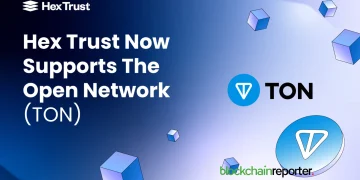In a thrilling announcement for the crypto sector, Units.Network has disclosed an exclusive collaboration with Eywa Protocol. As per Units Network, the partnership designates Eywa as its chief liquidity bridge through the CrossCurve platform for seamless liquidity. The platform took to social media to provide further details about this endeavor.
Units Network Adds Eywa Protocol as Its Main Liquidity Bridge Supporting Top Liquid Assets
Units.Network pointed out that the partnership incorporates the Eywa Protocol as the main liquidity bridge supporting prominent liquid assets. With this, the collaboration intends to create a secure and seamless way for consumers to exchange famous liquid assets. The popular assets take into account $WETH, $WBTC, $USDC, and $USDT across Units along with the rest of EVM-compatible chains.
The partnership offers the cross-chain liquidity potential of Eywa to the growing ecosystem of Units. CrossCurve, the platform that Eywa created, carries out straight asset exchanges throughout diverse blockchains. These blockchains reportedly possess efficient security as well as minimal slippage. While cross-chain functionality has gained a significant position in the crypto sector, this initiative denotes a noteworthy move for blockchain interoperability. It aims at establishing a comparatively unified blockchain network that offers flexible, fast options for asset management across several ecosystems.
As cross-chain compatibility is getting attention as the DeFi sector’s future, the partnership focuses on improving liquidity access. This permits users to freely conduct trades across multiple chains without much friction. This paves the way for a new level in terms of connectivity and flexibility within the ecosystem of Units. It also contributes to the wider EVM-compatible realm.
The Initiative Provides Efficient Transactions with Lowest Transfer Delays and Decreased Slippage
The crossCurve solution of Eywa Protocol particularly deals with liquidity-intensive assets. It guarantees effective transactions with the least transfer delays and minimizes slippage. The respective features play a crucial role for crypto traders requiring exchanging stablecoins as well as top assets without substantial price fluctuations.
Both the collaborators stressed their mutual commitment to decentralized, accessible, and secure liquidity solutions. This mirrors cross-chain finance’s potential to redefine the management and trading of assets. With an escalation in interest concerning cross-chain functionality, this collaboration places both entities as the leading players endeavoring for the broader DeFi innovation.























